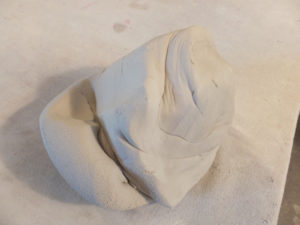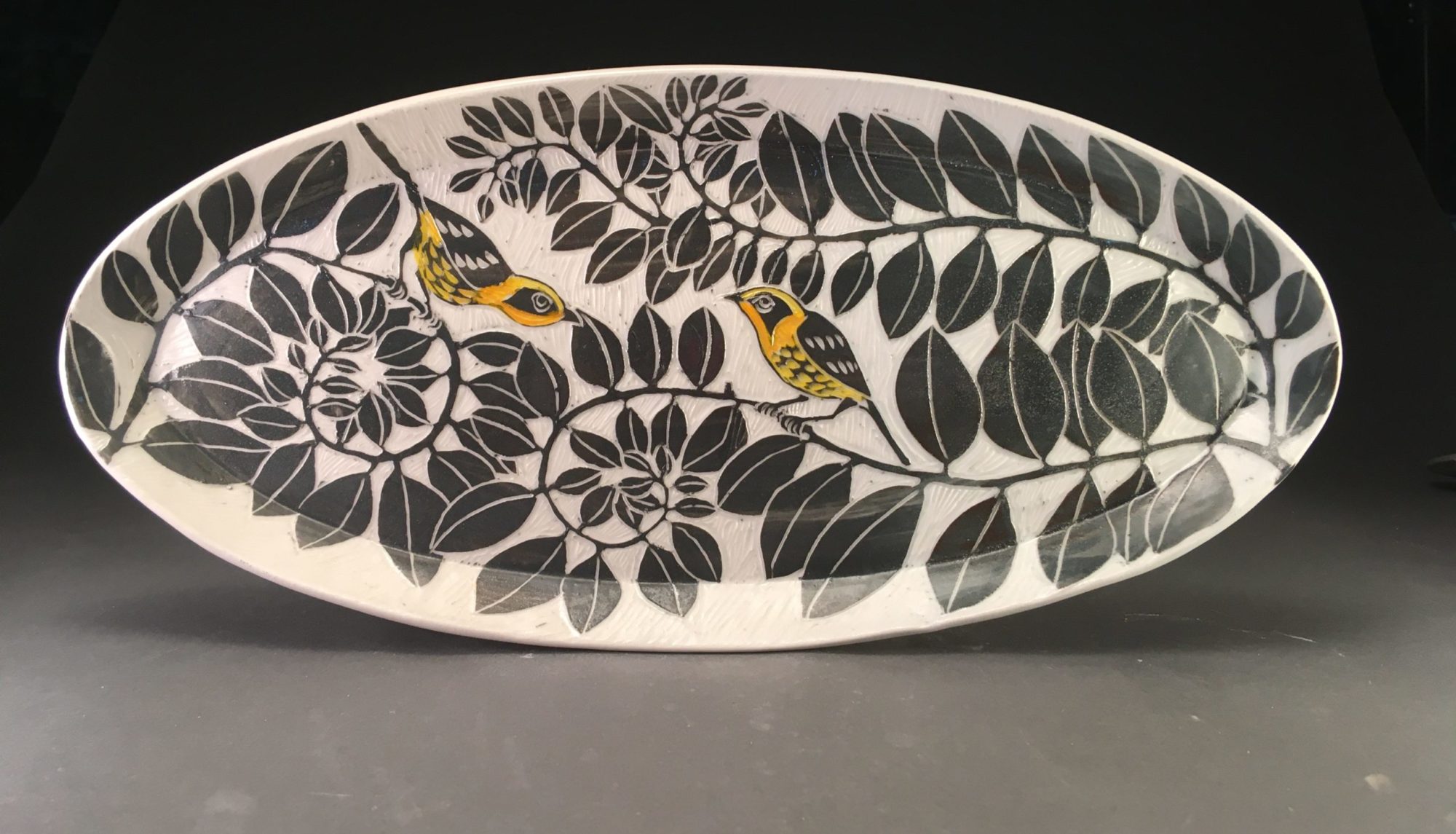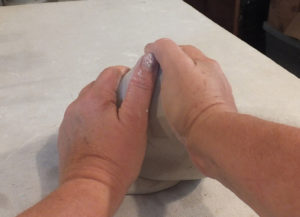Whew! I am very pleased to have finished the Murphy school Mosaic Time line.
This is the 3rd year I’ve worked on it with the 6th graders.
I am continually impressed with the level of capability amongst so many of the students there.
This year we added 3 more eras:
a Sampan from Feudal China, 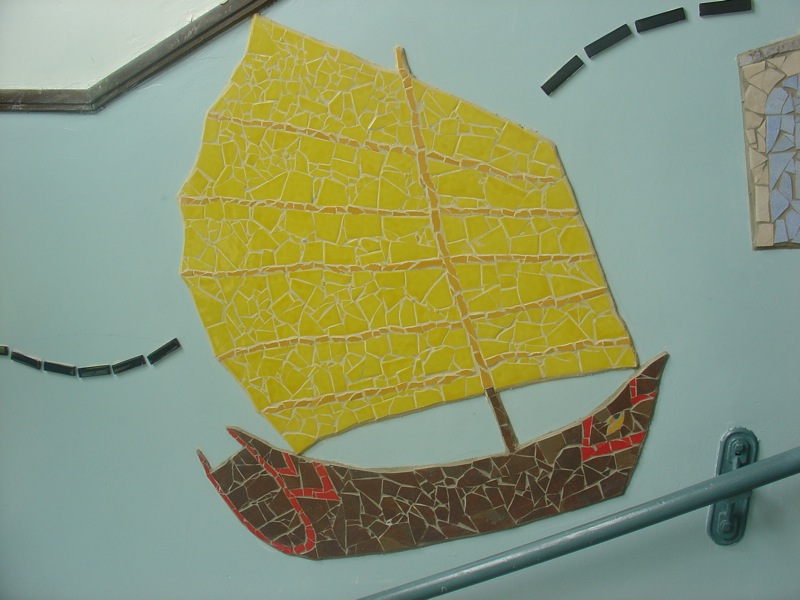
a Building from the Renaissance 
and a Globe and ship to represent the Age of Exploration. 
The steps of the process were as follows:
All the students drew pictures of things representing something from one of the three time periods.
I chose some images and made life-size drawings.
The kids came in small groups of around 8 to lay tile out on these drawings.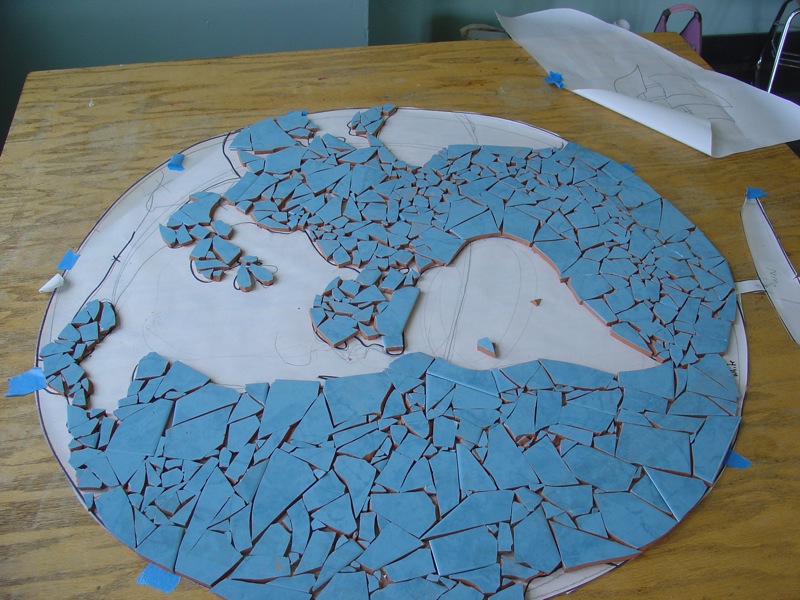
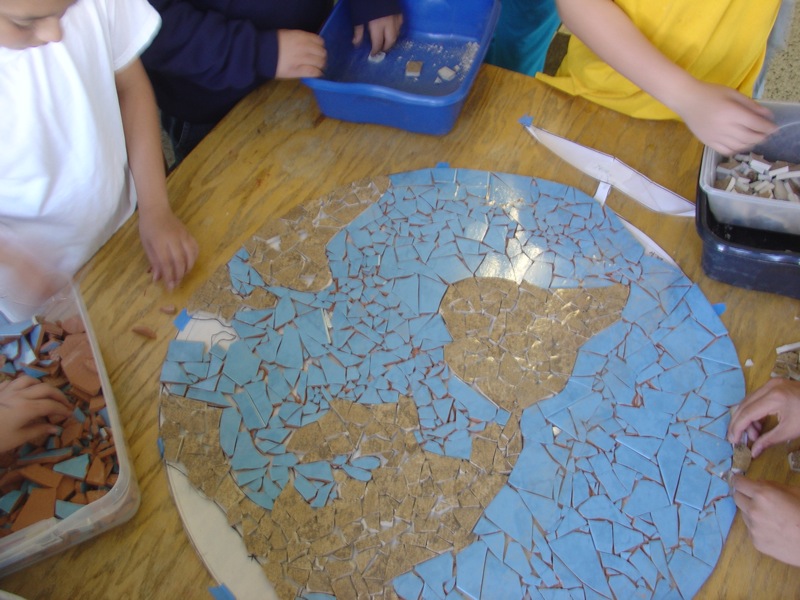
After the mosaic was completely laid out students or I taped the whole thing.
I then cut it into manageable sized parts. 
Students applied mastic
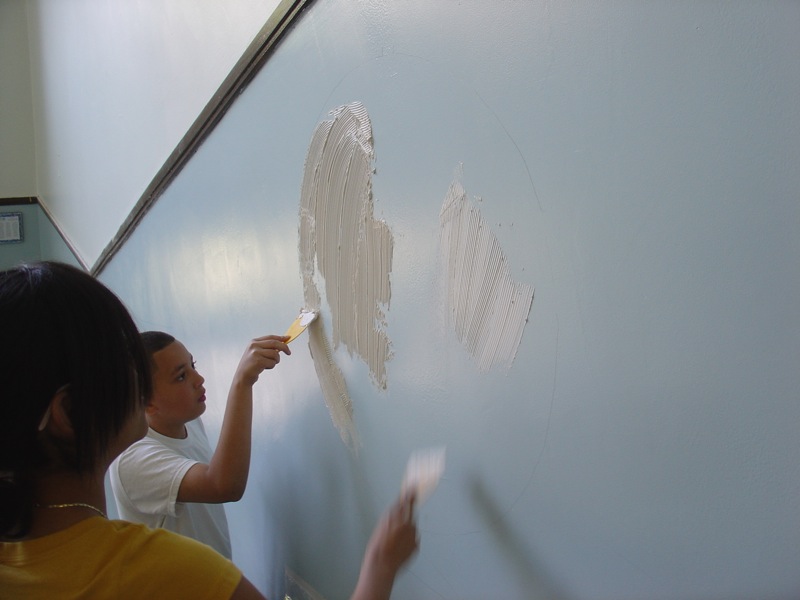 and then with two student assistants, I lifted the parts up and held them in position while my helpers pressed it into the mastic.
and then with two student assistants, I lifted the parts up and held them in position while my helpers pressed it into the mastic.
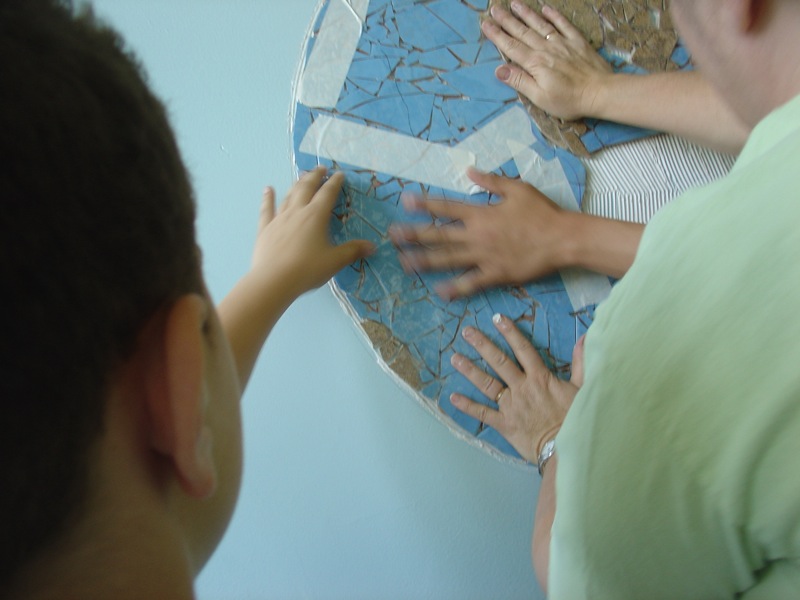
Once everything was up, the students helped me with two more steps.
I had a student glue the actual time line “dashes” individually up onto the wall while the clear tape was being removed by other students
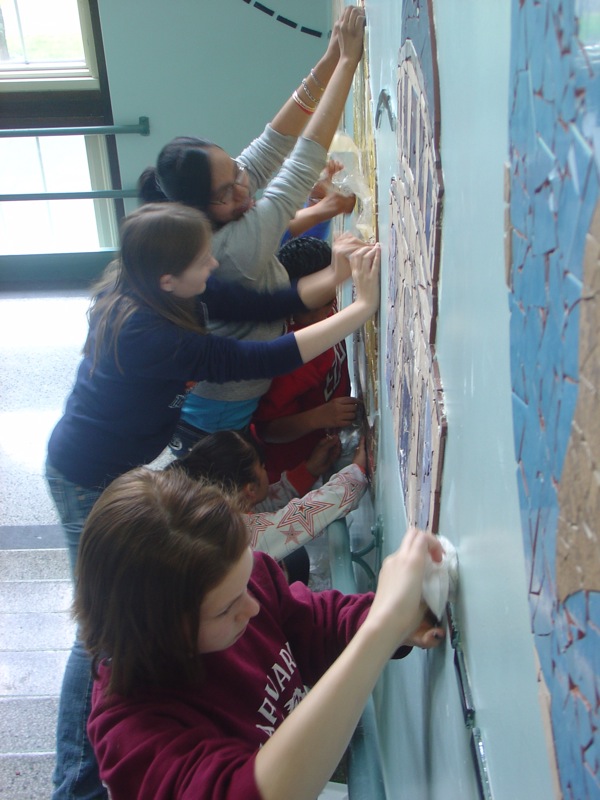
 The mastic was allowed to dry for several days.
The mastic was allowed to dry for several days.
The last stage was the grouting. I put up an outline of blue tape around each mosaic to contain the grout and then I put down a drop cloth. (These drop tarps are great in that they are pre-taped and come on a dispenser roll!)
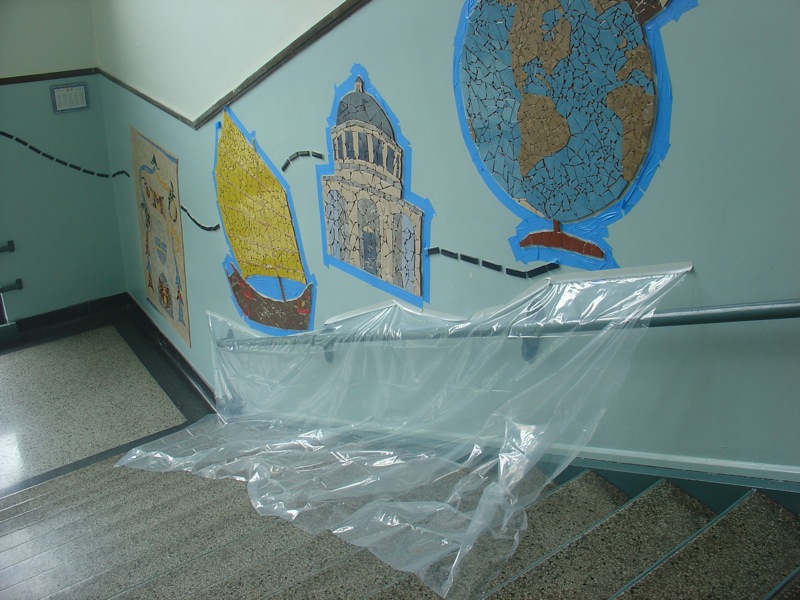
I choose to grout alone as it is too tricky to try to manage students at the same time- it is messy, requires a fair amount of skill and can cut one’s fingers. I wear latex gloves but they offer little protection.
In fact, now that I think of it, this is the first mosaic I have done where I have escaped without sliced fingertips! Yay! I must be getting better at this!
After using sponges to apply the grout using a kind of sweeping ‘S’ shaped movement to bring the grout into the cracks from various angles, I go back to the earliest piece that I grouted and hope that it has reached the “dusty” stage of dryness.
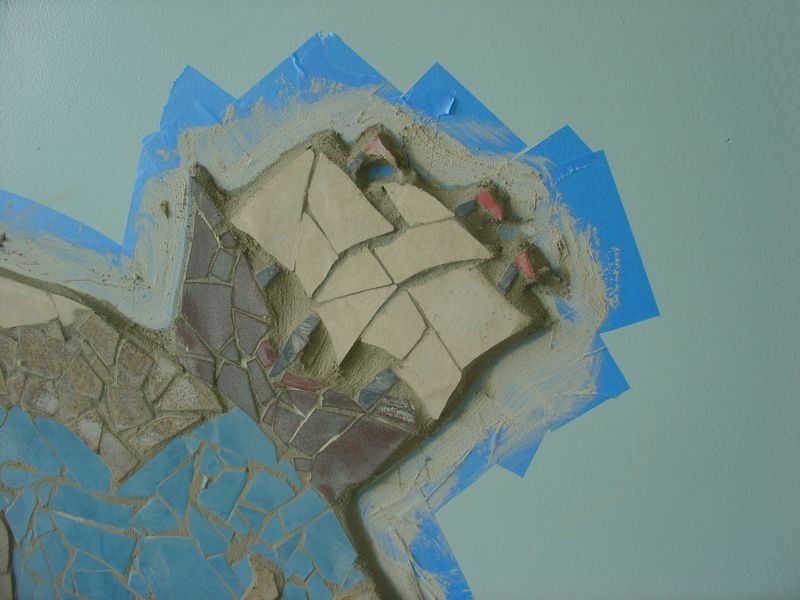
Lastly, I clean them off vigorously with paper “rags” and then remove the tape before the grout hardens completely. If I didn’t, the tape would actually get trapped under the hardened grout (it’s cement actually).
and VOILA!!  The finished Time Line.
The finished Time Line.
